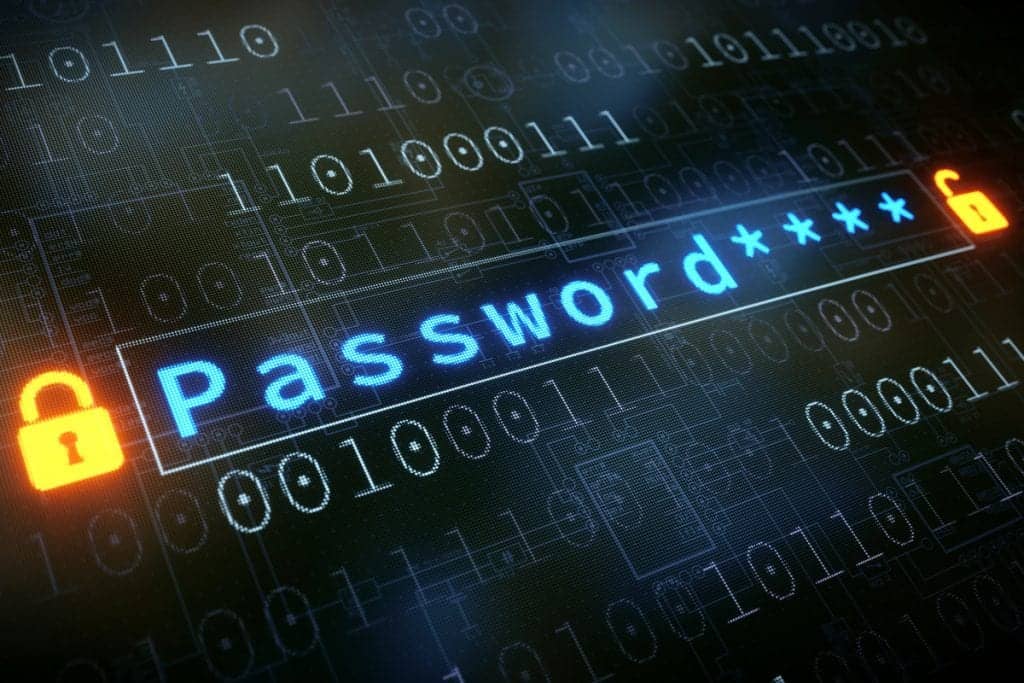Cyber security is the practice of protecting systems, networks, and programs from digital attacks designed to access, change, or destroy sensitive information, extort money through ransomware, or disrupt normal business operations.
In today’s hyper-connected world, businesses face an unprecedented array of cyber threats that can devastate operations within minutes. A single successful attack can cost your organization hundreds of thousands of dollars in recovery expenses, regulatory fines, and lost revenue.
The consequences extend far beyond the immediate financial impact. Data breaches damage customer trust, expose your business to lawsuits, and can permanently harm your reputation in the marketplace.
At CMIT Solutions, we’ve protected businesses from cyber threats for over 25 years. Our comprehensive approach combines cutting-edge technology with expert human oversight to deliver award-winning cybersecurity services that keep your business safe from evolving threats.
Our cybersecurity services provide 24/7 monitoring and rapid response to protect your business from all types of cyber attacks.
Who Needs Cyber Security Protection
📌 Every organization using digital tools is a potential target, especially those storing client data, processing payments, or managing remote teams.
Every business that uses digital technology needs cybersecurity protection, regardless of size, industry, or location. The misconception that cybercriminals only target large corporations has proven costly for countless small and medium-sized businesses.
Small and Medium-Sized Businesses
SMBs are increasingly targeted because they often have valuable data but limited security resources. Cybercriminals view them as easier targets compared to large enterprises with dedicated security teams.
Small businesses that especially need protection include:
- Professional service firms handling client confidential information
- Healthcare practices storing protected health information
- Financial service providers managing customer financial data
- Retail businesses processing payment card information
- Manufacturing companies are protecting intellectual property and operational systems
Remote and Hybrid Workers
Organizations with remote workforces face expanded attack surfaces as employees access sensitive data from various locations and devices outside traditional network perimeters.
Organizations Handling Sensitive Data
Any business that collects, stores, or processes:
- Customer personal information, including names, addresses, and phone numbers
- Financial data such as bank accounts and credit card information
- Health records are protected under HIPAA regulations
- Intellectual property, including trade secrets and proprietary designs
- Employee records containing Social Security numbers and payroll data
Why is Cybersecurity Important for Your Business
Modern businesses generate and store vast amounts of sensitive data across multiple platforms, from local servers to cloud environments. This distributed data landscape creates numerous vulnerabilities that cybercriminals actively exploit.
Small and medium-sized businesses are particularly vulnerable because they often lack dedicated IT security staff while handling valuable personal and financial information. Cybercriminals understand this vulnerability and specifically target SMBs with sophisticated attacks designed to bypass basic security measures.
The National Institute of Standards and Technology (NIST) Cybersecurity Framework emphasizes that effective security requires a comprehensive approach addressing people, processes, and technology working together to create robust defense systems.
1. Safeguarding Critical Business Data
Protecting your most valuable information assets from unauthorized access, theft, or destruction is fundamental to business survival. Customer records, financial data, intellectual property, and operational systems require comprehensive protection against sophisticated cyber threats.
Data breaches can expose everything from customer Social Security numbers to proprietary business processes. Once sensitive information is compromised, the damage often proves irreversible, affecting both current operations and future business opportunities.

2. Avoiding Devastating Financial Impact
The financial consequences of cyber attacks extend far beyond immediate theft. While some reports estimate small business breach costs from $120,000 to $1.2 million, broader industry research shows average total losses can reach $3.3 million, especially when factoring in downtime, churn, and fines.
Direct costs include forensic investigations, legal fees, regulatory fines, and system restoration expenses. Indirect costs often prove more devastating, including lost productivity, decreased revenue, and increased insurance premiums that continue long after the initial incident.
| Security Category | Example Tools/Technologies | Primary Purpose |
|---|---|---|
| Network Security | Firewalls, IDS/IPS, VPNs, Network Segmentation | Protect network infrastructure and prevent unauthorized access |
| Endpoint Protection | Antivirus software, EDR, Device encryption, MDM | Secure user devices such as laptops, desktops, and mobile phones |
| Email Security | Email filters, Secure Email Gateways, MFA, Encryption | Detect and block phishing, malware, and identity spoofing |
| Data Protection | Cloud backups, DLP, Encryption software | Ensure data confidentiality, integrity, and recoverability |
| Access Control | IAM, SSO, MFA, PAM | Restrict access to systems and data based on user roles |
| Security Monitoring | SIEM, Vulnerability Scanners, Penetration Testing | Continuously detect and respond to threats across the enterprise |
| Employee Awareness | Training programs, Phishing simulations, Security policies | Reduce human error and improve internal security posture |
3. Ensuring Uninterrupted Operations
Business continuity depends on maintaining secure, functional systems that support daily operations without disruption. Cyber attacks can halt production, prevent customer service, and block access to critical business applications for days or weeks.
Manufacturing companies face production shutdowns that cost thousands per hour. Professional service firms lose billable time and client trust when systems become unavailable. Recovery time averages 18-24 months for small businesses, assuming they survive the operational and financial impact.
4. Preserving Brand Reputation and Trust
Customer confidence takes years to build but minutes to destroy through a single security incident. When clients entrust you with their personal information, they expect professional-grade protection that matches your service quality.
News of data breaches spreads rapidly through social media and industry networks, often reaching potential customers before you can control the narrative. Reputation damage frequently exceeds direct financial losses, as customers choose competitors they perceive as more secure and trustworthy.
5. Meeting Legal and Regulatory Requirements
Compliance obligations continue expanding across industries and jurisdictions, with new privacy laws creating additional requirements for businesses handling personal data. Healthcare organizations must comply with HIPAA, financial firms face multiple regulatory frameworks, and all businesses must address state privacy laws.
Non-compliance penalties can reach 4% of global revenue under GDPR, while other regulations impose per-record fines that quickly accumulate. Regular audits and documentation requirements make compliance an ongoing operational necessity rather than a one-time implementation.
6. Strengthening Competitive Position
Organizations with robust security programs gain competitive advantages in the marketplace by attracting security-conscious customers and partners. Many large corporations now require vendors to demonstrate specific cybersecurity capabilities before establishing business relationships.
Professional service firms win more clients by showcasing their commitment to data protection. Security certifications and assessments become differentiators that justify premium pricing and longer-term contracts with valuable customers.
7. Mitigating Third-Party Vendor Risks
Your security is only as strong as your weakest vendor or partner. Supply chain attacks increasingly target trusted business relationships to gain access to ultimate victim organizations, making vendor risk management essential for comprehensive protection.
Cloud service providers, software vendors, and professional service partners all represent potential entry points for cybercriminals. Due diligence and ongoing monitoring ensure that business relationships don’t inadvertently compromise your security posture.
8. Enabling Digital Transformation
Cybersecurity enables rather than hinders technology adoption by providing the confidence necessary to leverage cloud computing, remote work capabilities, and digital customer engagement platforms. Without proper security foundations, businesses limit their growth potential.
Organizations with strong security programs implement new technologies faster and more successfully. Security becomes an enabler for innovation rather than a barrier to progress, supporting business objectives while managing associated risks.
Hypothetical Scenario: A local professional services firm experiences a ransomware attack that encrypts client files. Direct costs include $50,000 for forensic investigation, $25,000 for legal fees, and $100,000 in lost revenue during two weeks of downtime. Long-term impacts include $200,000 in lost clients and $75,000 in reputation recovery efforts.
Building trust with clients through comprehensive cybersecurity demonstrates your commitment to protecting their most valuable assets. For business leaders looking to position cybersecurity as a competitive advantage and trust-building tool, our comprehensive guide explores how security excellence translates into stronger client relationships and business growth.
Download our free e-book: Cybersecurity and the Trusted Advisor
Protect your systems before a breach occurs. Contact us today to schedule a personalized cybersecurity assessment.
Examples of Cyber Security Solutions
💡 The most effective programs combine people, process, and technology—tools alone can’t stop evolving threats.
Cyber security encompasses a wide range of protective measures designed to safeguard business systems, data, and operations from digital threats. These solutions work together to create comprehensive defense strategies.

Network Security Solutions
Firewalls and intrusion detection systems monitor and control network traffic to prevent unauthorized access. Next-generation firewalls analyze application-level traffic and can identify sophisticated attacks that traditional security measures might miss.
Virtual Private Networks (VPNs) encrypt internet connections to protect remote workers and secure communications between office locations. Network segmentation limits potential damage by isolating critical systems from general business networks.
Endpoint Protection Examples
Antivirus and anti-malware software detect and remove malicious programs from computers, servers, and mobile devices. Modern endpoint protection platforms combine multiple security functions into unified solutions.
Device encryption protects data stored on laptops, smartphones, and tablets if devices are lost or stolen. Mobile device management (MDM) ensures company devices meet security standards and can be remotely wiped if compromised.
Email and Communication Security
Email filtering systems block phishing attempts, malware attachments, and spam before they reach employees’ inboxes. Secure email gateways scan both inbound and outbound communications for sensitive information.
Digital certificates and encryption protect email communications and verify sender authenticity. Multi-factor authentication adds extra security layers for email accounts and communication platforms.
Data Protection and Backup Solutions
Data backup systems create secure copies of critical business information that can be restored after cyberattacks or system failures. Cloud backup services provide off-site storage that remains accessible even if local systems are compromised.
Data loss prevention (DLP) tools monitor and control how sensitive information is accessed, shared, and transmitted. Encryption software transforms readable data into unreadable code that requires specific keys to decrypt.
Access Control and Authentication
Multi-factor authentication (MFA) requires users to provide multiple forms of verification before accessing systems. Single sign-on (SSO) solutions improve security while simplifying user access to multiple applications.
Identity and access management (IAM) systems control who can access specific systems and data based on job roles and responsibilities. Privileged access management provides extra security for administrator accounts with elevated permissions.
Security Monitoring and Response
Security Information and Event Management (SIEM) platforms collect and analyze security events from across the organization to identify potential threats. 24/7 security operations centers provide continuous monitoring and rapid response capabilities.
Vulnerability scanning tools regularly assess systems for security weaknesses and provide guidance for remediation. Penetration testing involves authorized security professionals attempting to breach systems to identify vulnerabilities.
Employee Training and Awareness Programs
Security awareness training educates staff about recognizing phishing emails, social engineering tactics, and proper data handling procedures. Simulated phishing exercises test employee responses and provide additional training opportunities.
Security policies and procedures establish clear guidelines for password management, incident reporting, and acceptable use of company systems. Regular security updates keep employees informed about emerging threats and changing security practices.
While comprehensive security solutions address multiple threat vectors, every business can immediately implement practical protection measures to strengthen its security posture. Our detailed cybersecurity checklist provides 16 actionable steps that business owners can take right away to protect their organizations from the most common cyber threats.
Download our free checklist: 16 Ways to Protect Your Business from a Cyberattack
Basics of Cyber Security: Core Components for Protection
Successful cybersecurity strategies require multiple layers of protection working together to address diverse threat vectors and attack methods.

People: The Human Factor in Security
Employees represent both the weakest link and strongest defense in cybersecurity. Human error accounts for a significant percentage of successful attacks, but well-trained staff can identify and prevent threats before they impact operations.
Effective security awareness training goes beyond basic password hygiene to include:
- Recognizing social engineering tactics used by sophisticated attackers
- Proper data handling procedures for sensitive information
- Incident reporting protocols that enable rapid response
- Regular security updates addressing emerging threats
Processes: Structured Security Operations
Organizations must establish comprehensive frameworks for managing both attempted and successful cyberattacks. Clear policies and procedures ensure consistent responses during high-stress security incidents.
Key process elements include:
- Data classification schemes that define protection requirements
- Access control policies limiting data exposure
- Incident response plans minimize damage from successful attacks
- Regular security assessments identify vulnerabilities
Technology: Advanced Security Tools
Modern cybersecurity requires sophisticated technology solutions that can detect, analyze, and respond to threats faster than human capabilities alone. AI-powered security tools provide 24/7 monitoring and automated responses to emerging threats.
Essential technology components include:
- Next-generation firewalls with advanced threat detection
- Email security solutions prevent phishing attacks
- Endpoint protection secures all connected devices
- Network monitoring identifies suspicious activities
Most Common Cyber Attacks and Threats
Cybercriminals employ various attack methods to compromise business systems and steal valuable information. Knowing these threats helps organizations prepare appropriate defenses.
Tailgating in Cyber Security
Tailgating attacks exploit physical security vulnerabilities by having unauthorized individuals follow authorized personnel into secure areas. These attacks bypass digital security measures entirely, providing direct access to sensitive systems and information.
Modern tailgating attempts combine social engineering with careful reconnaissance to create convincing scenarios. Attackers might pose as delivery personnel, maintenance workers, or even new employees to gain building access and potentially install malware or steal confidential data.
Key prevention strategies include:
- Implementing strict entry procedures requiring individual authentication
- Training employees to verify credentials before allowing building access
- Installing physical barriers like turnstiles or mantrap entries
- Conducting regular security audits to identify vulnerabilities
Tailgating attacks remain a major concern for physical access control, making it essential to understand what is tailgating in cyber security.
Phishing Attacks: Email-Based Threats
Phishing represents one of the most common and successful attack vectors facing businesses today. These social engineering campaigns use fraudulent communications to trick recipients into providing sensitive information or downloading malware.
Modern phishing attacks have evolved beyond simple email scams to include:
- Spear phishing targeting specific individuals with personalized messages
- Business email compromise schemes impersonating trusted partners
- SMS phishing (smishing) is delivered through text messages
- Voice phishing (vishing) using phone-based social engineering
Advanced email security solutions can detect and block many phishing attempts, but employee awareness training remains critical for identifying sophisticated attacks that bypass technical filters.
Every employee should know what is phishing to avoid falling victim to deceptive emails and fraudulent links.
⚠️ From phishing to ransomware, knowing the enemy’s tactics is essential to building meaningful defenses.
Additional reading: what is phishing
Personally Identifiable Information (PII) Protection
PII represents one of the most valuable targets for cybercriminals and is subject to strict regulatory requirements across multiple jurisdictions. Knowing what constitutes PII and how to protect it is essential for compliance and customer trust.
PII includes both direct identifiers, like Social Security numbers, and indirect identifiers that become identifying when combined with other information. The regulatory landscape continues expanding with new privacy laws creating additional obligations for businesses handling personal data.
Protection strategies must address:
- Data discovery and classification to identify sensitive information
- Access controls limiting who can view or modify PII
- Encryption protects data both at rest and in transit
- Regular audits ensure ongoing compliance with privacy regulations
Businesses that collect personal data must clearly define what is PII in cyber security to ensure legal compliance and client trust.
Whaling Attacks: Executive-Targeted Threats
Whaling attacks specifically target high-level executives and senior management with sophisticated social engineering campaigns. These attacks often result in significant financial losses because executives have the authority to authorize large transactions and access to confidential information.
Successful whaling campaigns involve extensive research into target organizations, creating highly personalized communications that appear to come from trusted sources. The psychological pressure tactics used in these attacks often bypass normal verification procedures.
Defense strategies include:
- Multi-factor authentication for all financial transactions
- Verification procedures requiring independent confirmation of requests
- Executive training addressing specific threats facing leadership
- Email security with advanced threat detection capabilities
Executives are often targets of highly personalized cyber threats, which is why it’s important to know what is a whaling attack in cyber security.
![]()
Endpoint Detection and Response (EDR)
EDR solutions provide continuous monitoring and protection for all devices connecting to business networks. Unlike traditional antivirus software that relies on known threat signatures, EDR uses behavioral analytics to identify suspicious activities in real-time.
Modern businesses require comprehensive endpoint protection because:
- Remote work expands attack surfaces beyond traditional office networks
- Advanced threats often bypass signature-based detection methods
- Rapid response capabilities minimize damage from successful attacks
- Forensic analysis helps understand attack methods and prevent recurrence
EDR capabilities include real-time monitoring, threat hunting, automated response, and detailed forensic investigation tools that provide visibility into endpoint activities across the entire organization.
Endpoint protection has become essential for securing remote devices, and learning what is EDR in cyber security is a great place to start.
Cryptographic Hashing for Data Integrity
Hashing provides essential data integrity verification throughout business operations by creating unique digital fingerprints for files and communications. This cryptographic technique ensures that data hasn’t been tampered with during storage or transmission.
Common business applications include:
- Password authentication stores secure credentials without exposing actual passwords
- Document verification detects unauthorized changes to important files
- Backup integrity ensures restored files match the original versions
- Digital signatures verify the sender’s identity and message authenticity
Modern hashing algorithms like SHA-256 provide robust security for most business applications, while older methods like MD5 should be avoided due to known vulnerabilities.
When protecting stored and transmitted data, it helps to understand what is hashing in cyber security and why it supports integrity verification.
Spoofing Attacks: Identity Deception
Spoofing attacks involve criminals disguising their identity to impersonate trusted sources and gain unauthorized access to business systems. These deceptive tactics exploit trust relationships to bypass traditional security measures.
Types of spoofing include:
- Email spoofing creates fake messages from trusted senders
- IP spoofing, masking network addresses to appear as authorized systems
- Website spoofing creates fake sites to steal login credentials
- Caller ID spoofing disguises phone numbers during voice-based attacks
The rise of artificial intelligence has enhanced spoofing capabilities, enabling deepfake technology and voice cloning that make detection increasingly challenging for traditional verification methods.
To defend against impersonation attempts, companies should educate staff on what is spoofing in cyber security and how to recognize red flags.
Data Loss Prevention (DLP)
DLP solutions prevent unauthorized access, use, or transmission of sensitive business data across all systems and communication channels. These comprehensive security strategies address both internal and external threats to confidential information.
Effective DLP implementation requires:
- Data discovery identifies sensitive information across all systems
- Policy enforcement controls how data can be accessed and shared
- Real-time monitoring detects potential violations as they occur
- Incident response containing breaches and minimizing damage
DLP becomes increasingly important as businesses adopt cloud technologies and support remote workforces that access sensitive data from various locations and devices outside traditional network perimeters.
If your business handles sensitive information, it is critical to implement solutions based on what is DLP in cyber security to prevent data leaks.
Are you facing complex compliance requirements or rising threat risks? Speak with our IT experts to design a security solution that fits your needs.
Emerging Cyber Security Threats and Technologies
The cybersecurity landscape continues evolving rapidly as new technologies create both opportunities and challenges for business protection.
Pretexting in Cyber Security
[Internal link to future Pretexting blog post]Pretexting involves creating fabricated scenarios to manipulate victims into divulging sensitive information or performing actions that compromise security. This sophisticated social engineering technique combines extensive research with psychological manipulation to create convincing false narratives.
Attackers might impersonate IT support staff, government officials, or business partners to establish trust and authority. The key to preventing pretexting lies in establishing verification procedures that confirm identity through independent channels before sharing sensitive information.
Red Teaming for Security Testing
[Internal link to future Red Teaming blog post]Red teaming provides comprehensive security assessments through simulated attacks that test both technical controls and human responses. These authorized testing exercises help organizations identify vulnerabilities before malicious actors can exploit them.
Professional red team exercises go beyond basic penetration testing to include:
- Physical security assessments testing building access controls
- Social engineering campaigns evaluating employee awareness
- Advanced persistent threat simulations mimicking sophisticated attackers
- Incident response testing validates emergency procedures

DDoS Attacks: Overwhelming Systems
[Internal link to future DDoS blog post]Distributed Denial of Service (DDoS) attacks overwhelm systems with massive amounts of traffic to disrupt normal operations. These attacks can bring business operations to a halt while providing cover for more sophisticated infiltration attempts.
Modern DDoS attacks utilize botnets consisting of thousands of compromised devices to generate traffic volumes that can overwhelm even robust network infrastructure. Cloud-based DDoS protection services provide the scalability needed to absorb large-scale attacks.
The Business Benefits of Cyber Security
[Internal link to future Benefits blog post]Comprehensive cybersecurity strategies provide measurable business value beyond risk reduction. Organizations with robust security programs experience improved operational efficiency, enhanced customer trust, and competitive advantages in the marketplace.
Quantifiable benefits include:
- Reduced downtime from security incidents and system failures
- Lower insurance premiums through demonstrated risk management
- Improved compliance with regulatory requirements and industry standards
- Enhanced reputation, attracting security-conscious customers and partners
Social Engineering Attack Prevention
[Internal link to future Social Engineering blog post]Social engineering attacks manipulate human psychology rather than exploiting technical vulnerabilities. These sophisticated campaigns combine multiple attack vectors to create convincing scenarios that bypass security awareness training.
Comprehensive defense strategies must address:
- Multi-channel attacks combining email, phone, and physical approaches
- Authority impersonation leveraging organizational hierarchies
- Urgency creation, pressuring victims to act without verification
- Information gathering from social media and public sources
Next-Generation Cyber Security Technologies
The cybersecurity landscape continues evolving with cutting-edge technologies that provide enhanced protection against sophisticated threats and enable more efficient security operations.
Zero Trust Security Architecture
Zero trust represents a fundamental shift from traditional perimeter-based security to comprehensive verification for every access request. This architectural approach assumes threats exist everywhere and requires continuous authentication regardless of user location or device type.
Zero trust implementation includes:
- Micro-segmentation creates granular network controls
- Continuous risk assessment, adapting security based on behavior
- Policy-based access granting minimum necessary permissions
- Real-time threat intelligence informing security decisions
✔️ Robust cybersecurity drives client trust, improves operations, and reduces long-term costs through risk avoidance.
Artificial Intelligence and Machine Learning
AI-powered security platforms process massive amounts of data to identify patterns and anomalies that human analysts might miss. Machine learning algorithms continuously improve threat detection while reducing false positive rates that overwhelm security teams.
Advanced AI applications include:
- Behavioral analytics establishes user baseline activities
- Predictive threat modeling, anticipating attack methods
- Automated incident response containing threats without human intervention
- Natural language processing analyzes security communications
Extended Detection and Response (XDR)
XDR platforms unify security data across endpoints, networks, cloud environments, and applications to provide comprehensive threat visibility. This integration enables faster threat detection and more effective incident response than traditional isolated security tools.
XDR capabilities include:
- Cross-platform correlation connecting related security events
- Automated threat hunting proactively searches for hidden threats
- Orchestrated response coordinating actions across multiple security tools
- Advanced forensics provides detailed attack analysis
Quantum-Resistant Cryptography
Quantum computing developments threaten current encryption methods, driving the need for quantum-resistant algorithms that can withstand future computational capabilities. Organizations must begin planning transitions to post-quantum cryptography standards.
Quantum-safe security includes:
- Algorithm migration, updating encryption methods
- Hybrid implementations combining current and future-proof methods
- Key management evolution adapting to new cryptographic requirements
- Timeline planning, preparing for quantum computing maturity
Cloud-Native Security Platforms
Cloud-native security solutions are built specifically for modern distributed architectures, providing scalable protection that adapts to dynamic cloud environments. These platforms offer better integration and performance than traditional security tools adapted for cloud use.
Cloud-native features include:
- API-first architecture enabling seamless integrations
- Elastic scaling adjusts protection based on demand
- Container security protects containerized applications
- Serverless security securing function-based computing models
Before you invest in new tools or policies, take a moment to align your security strategy with expert insight.
Do not wait until after an attack. Book your free consultation with our cybersecurity experts and get actionable insights for your business.
Building Your Cyber Security Strategy
Effective cybersecurity strategies require systematic planning that addresses current threats while preparing for future challenges.
Risk Assessment and Planning
Comprehensive risk assessments identify vulnerabilities before they can be exploited by attackers. These evaluations should examine technical controls, business processes, and human factors that contribute to the overall security posture.
Assessment components include:
- Asset inventory cataloging all systems and data
- Threat modeling identifies potential attack vectors
- Vulnerability scanning detects technical weaknesses
- Business impact analysis prioritizing protection efforts

Framework Implementation
Industry-standard frameworks provide structured approaches to cybersecurity implementation. The NIST Cybersecurity Framework offers comprehensive guidance through five core functions: Identify, Protect, Detect, Respond, and Recover.
Other relevant frameworks include:
- ISO 27001 for information security management systems
- CIS Controls prioritizing essential security actions
- NIST 800-53 provides detailed security controls
- Industry-specific standards addressing regulatory requirements
Employee Training Programs
Security awareness training transforms employees from potential vulnerabilities into active defenders. Effective programs combine initial education with ongoing reinforcement through simulated attacks and updated threat information.
Training elements should include:
- Threat recognition identifies common attack methods
- Incident reporting encourages prompt threat notification
- Best practices following secure procedures
- Regular updates addressing emerging threats
Technology Selection and Implementation
Choosing appropriate security technologies requires knowing business requirements, technical capabilities, and budget constraints. Integrated solutions often provide better protection than point products from multiple vendors.
Selection criteria include:
- Integration capabilities with existing systems
- Scalability supporting business growth
- Management complexity matching internal capabilities
- Total cost of ownership, including licensing and support
Compliance and Regulatory Requirements
Modern businesses must go through complex regulatory landscapes that mandate specific data protection measures and cybersecurity practices.
Major Regulatory Frameworks
- GDPR (General Data Protection Regulation) establishes comprehensive data protection requirements for organizations processing European personal data, regardless of business location. Non-compliance can result in fines up to 4% of global revenue.
- HIPAA (Health Insurance Portability and Accountability Act) mandates specific safeguards for protected health information in healthcare organizations and their business associates.
- PCI DSS (Payment Card Industry Data Security Standard) requires organizations handling credit card information to implement comprehensive security measures and undergo regular assessments.
- State privacy laws, including the CCPA (California Consumer Privacy Act), create additional obligations for businesses serving consumers in specific jurisdictions.
⚖️ Regulations are no longer optional—compliance is mandatory and should be part of your security design, not an afterthought.
Compliance Implementation
Effective compliance programs integrate regulatory requirements into broader cybersecurity strategies rather than treating them as separate initiatives. This approach reduces complexity while ensuring comprehensive protection.
Implementation steps include:
- Requirement mapping, identifying applicable regulations
- Gap analysis comparing current practices to requirements
- Policy development, documenting compliance procedures
- Regular audits verifying ongoing adherence
Industry-Specific Cyber Security Considerations
Different industries face unique cybersecurity challenges based on the types of data they handle and the regulatory requirements they must meet.
Healthcare Cybersecurity
Healthcare organizations face sophisticated attacks targeting valuable medical records and patient information. These businesses must balance security requirements with operational needs that prioritize patient care.
Specific challenges include:
- Legacy systems with limited security capabilities
- Medical device security protects connected healthcare equipment
- Remote access enabling telemedicine and mobile care
- Business associate compliance managing third-party relationships
Financial Services Security
Financial institutions handle sensitive customer data and payment information, which makes them prime targets for cybercriminals. Regulatory requirements are particularly stringent in this sector.
Key considerations include:
- Real-time fraud detection identifies suspicious transactions
- Customer authentication balancing security with user experience
- Third-party risk management securing vendor relationships
- Incident response minimizing customer impact during breaches

Manufacturing and Industrial Security
Manufacturing companies face unique operational technology (OT) security challenges as industrial systems become increasingly connected to corporate networks and the internet.
Critical areas include:
- Industrial control system security protects production environments
- Supply chain security, managing vendor and partner risks
- Intellectual property protection safeguards proprietary designs
- Operational continuity, maintaining production during security incidents
Strong cybersecurity is not just a precaution; it is a core part of business continuity and client trust.
Your business deserves enterprise-grade protection. Contact us now to learn how our 24/7 monitoring and layered defense keep you safe.
Measuring Cyber Security Effectiveness
Successful cybersecurity programs require metrics that demonstrate value and identify areas for improvement. Effective measurement combines technical indicators with business impact assessments.
Key Performance Indicators
Technical metrics provide insights into security tool effectiveness:
- The mean time to detection measures threat identification speed
- Mean time to response tracking incident containment performance
- False positive rates indicate detection accuracy
- System availability demonstrating operational impact
Business metrics connect security performance to organizational objectives:
- Cost avoidance quantifying prevented breach expenses
- Compliance scores measuring regulatory adherence
- Customer trust metrics tracking reputation impact
- Employee productivity assessing the security tool impact
Return on Investment
Cybersecurity ROI calculations help justify investments and prioritize spending. The most effective approach compares prevented losses to program costs while considering both direct and indirect benefits.
ROI factors include:
- Prevented breach costs based on industry averages and organizational risk
- Operational efficiency improvements from automated security processes
- Compliance cost reduction through streamlined reporting and auditing
- Insurance premium savings from demonstrated risk management
✔️ Track detection times, employee behavior, and system performance to assess and improve your security posture.
The Future of Cyber Security
The cybersecurity landscape continues evolving as new technologies emerge and threat actors develop increasingly sophisticated attack methods.
Emerging Technologies
- Quantum computing presents both opportunities and challenges for cybersecurity. While quantum systems could eventually break current encryption methods, quantum-resistant cryptography is already under development.
- Internet of Things (IoT) expansion creates new attack surfaces as billions of connected devices join networks. Each device represents a potential entry point for cybercriminals.
- Artificial Intelligence advancement enables both better security tools and more sophisticated attacks. AI-powered threats can adapt to defenses in real-time.
Evolving Threat Landscape
- Nation-state actors increasingly target private businesses as part of broader economic and political objectives. These sophisticated attackers have resources that exceed most corporate security budgets.
- Supply chain attacks target trusted vendors and partners to gain access to the ultimate victim organizations. These attacks are particularly difficult to detect and defend against.
- Ransomware evolution continues with double and triple extortion tactics that steal data before encryption and threaten public disclosure.
Preparing for Future Challenges
Adaptive security strategies focus on resilience and rapid response rather than attempting to prevent all possible attacks. Organizations must assume that sophisticated attackers will eventually succeed and prepare accordingly.
Key preparation elements include:
- Incident response planning with detailed recovery procedures
- Business continuity ensures operations can continue during attacks
- Threat intelligence staying informed about emerging attack methods
- Technology investments in adaptive and AI-powered security tools
How CMIT Solutions Protects Your Business
📌 Our layered approach combines national-scale resources with local expertise to deliver tailored cybersecurity solutions.
At CMIT Solutions, we combine over 25 years of cybersecurity expertise with cutting-edge technology to deliver comprehensive protection for businesses of all sizes. Our award-winning approach has consistently ranked on Entrepreneur Magazine’s Franchise 500 list for more than a decade.
Our Comprehensive Security Approach
- 24/7 Security Operations Center monitoring provides round-the-clock threat detection and response capabilities. Our expert analysts continuously monitor your systems for suspicious activities and respond immediately to potential threats.
- Multi-layered defense strategies combine advanced technology with human expertise to create robust protection against sophisticated attacks. We understand that no single security tool can address all threats.
- Local expertise with national resources ensures you receive personalized service backed by extensive capabilities. We’re part of a large network of over 900 IT experts nationwide, giving us access to extensive resources and expertise while maintaining our focus on personalized, local service.
This unique combination of local ownership with national-scale resources provides distinct advantages for growing businesses. Our comprehensive approach delivers enterprise-grade cybersecurity capabilities with the personal attention and rapid response times that only local ownership can provide.
Download our free e-book: Local Owners, National Strength
Proven Results
ConnectWise named CMIT Solutions Partner of the Year, their highest partner honor, recognizing our commitment to excellence in managed security services.
Our client’s experience:
- Significantly reduced security incidents through proactive monitoring and prevention
- Faster incident response with average containment times under 30 minutes
- Improved compliance posture, meeting regulatory requirements efficiently
- Enhanced business continuity, maintaining operations during security events
Customized Solutions
Industry-specific security solutions address the unique challenges facing different business sectors. We understand that healthcare, financial services, legal, and manufacturing organizations have distinct requirements.
Our services include:
- Comprehensive risk assessments identifying vulnerabilities specific to your business
- Customized security policies addressing your operational requirements
- Employee training programs tailored to your industry and threat landscape
- Incident response planning with procedures specific to your business needs
We’re actively engaged in helping businesses in the area succeed. With CMIT Solutions, you can count on the integrity of locally invested relationships backed by a strong multi-location network of resources.
Contact CMIT Solutions today at (888) 559-5940 to schedule your security assessment and learn how we protect organizations like yours from evolving cyber threats.
Frequently Asked Questions
What is the difference between cybersecurity and information security?
Cybersecurity focuses specifically on protecting against digital attacks and threats originating from the internet or connected systems. Information security encompasses a broader scope, including physical security measures, policy development, and protection of information in all forms, whether digital or physical.
How much should small businesses budget for cybersecurity?
Small businesses should typically allocate 3-7% of their IT budget to cybersecurity, with specific amounts varying based on industry, risk tolerance, and regulatory requirements. Most small businesses spend between $5,000-$25,000 annually on comprehensive security solutions, though this investment often pays for itself by preventing costly breaches.
Can cyber insurance replace the need for cybersecurity measures?
No, cyber insurance supplements but cannot replace proper cybersecurity measures. Insurance policies typically require organizations to implement specific security controls and may exclude coverage for preventable incidents. The best approach combines comprehensive security measures with appropriate insurance coverage.
How often should businesses conduct cybersecurity training?
Effective cybersecurity awareness training should occur quarterly for all employees, with monthly updates addressing emerging threats. New employees should receive comprehensive training during onboarding, and high-risk personnel like executives and finance staff should receive additional specialized training.
What should businesses do immediately after discovering a cyber attack?
Immediately isolate affected systems to prevent further damage, document all evidence, contact your cybersecurity provider or incident response team, notify appropriate authorities if required, and begin implementing your incident response plan. Quick action in the first few hours can significantly minimize damage and recovery costs.
How do businesses know if their cybersecurity measures are effective?
An effective cybersecurity measurement includes tracking metrics like incident detection and response times, conducting regular penetration testing, monitoring employee training effectiveness through simulated attacks, and maintaining compliance with relevant regulations. Professional security assessments provide objective evaluations of security posture.



